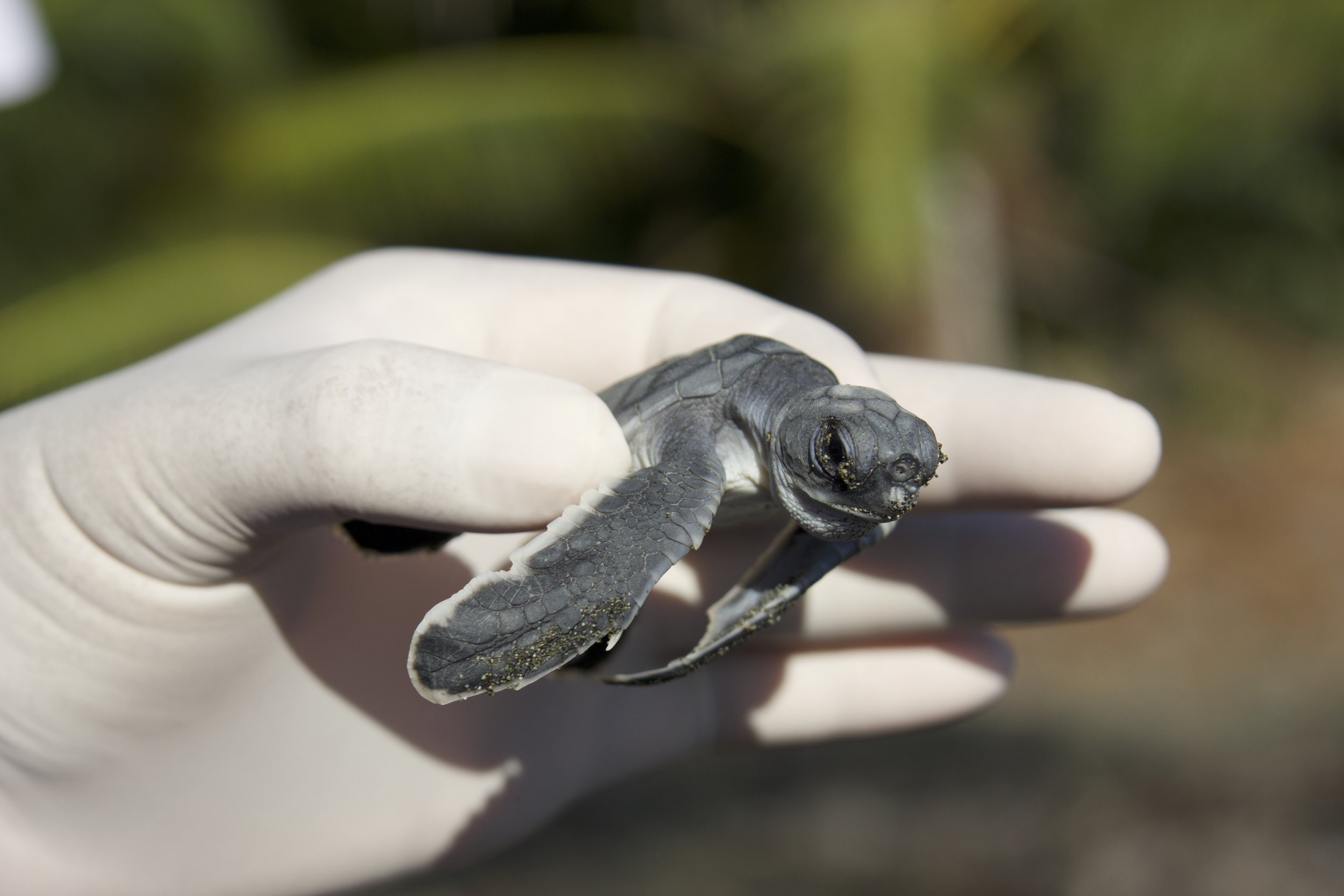A Day in the Life of a Sea Turtle Conservation Volunteer
Tucked away on the remote and wildlife-rich Osa Peninsula, life at the Río Oro camp with COPROT (Comunidad Protectora de Tortugas de Osa) is unlike anything else I’ve experienced. It’s a life shaped by tides and turtle tracks, sunrise patrols and jungle sunsets — and one that stays with you long after you’ve left.
I volunteered here in February, at the height of the dry season, and I can honestly say I absolutely loved it. Days were full of purpose, wild encounters, and an ever-growing appreciation for the turtles that call these beaches home. Here’s what a typical day looks like as a sea turtle conservation volunteer on Costa Rica’s Osa Peninsula.
Mornings: Patrols, Sunrises, and Slow Starts
Your day often starts before the sun rises. If you’re on morning patrol, you’ll head out to the beach around 5am, walking the tide line in search of turtle tracks, nest activity, and signs of predation. It’s quiet, cool, and often breathtaking — watching the sky shift from darkness to gold as waves roll in.
Patrols usually last around four hours, but that can change quickly if you come across a nesting turtle. Some mornings, you’re back in time for breakfast. Others, you’re on your knees carefully measuring eggs or relocating nests to safer spots. It all depends on the turtles — they set the schedule.
Back at camp, mornings settle into a slower rhythm. Research assistants work on their laptops, volunteers make coffee, and the day's camp chores are divided up. These rotate daily and include:
Cleaning the toilets and showers (and burning the toilet paper — a rite of passage)
Sweeping and tidying the kitchen and communal areas
Washing down and organising the equipment used during patrols
Occasional gardening or maintenance tasks around camp
It’s a team effort, and everyone plays a role in keeping things running smoothly.
Midday: Heat, Hammocks and Workshops
By midday, the heat is intense. It’s not uncommon for the temperature to soar — so the pace naturally slows. This is hammock time. You’ll find volunteers sprawled out in the shade, reading, chatting, napping, or reflecting on the morning's patrol.
Occasionally, we’d have educational workshops during the day — sessions led by the camp’s staff or visiting researchers. Topics included:
The biology and conservation of olive ridley (Lepidochelys olivacea) and green sea turtles (Chelonia mydas)
The issue of plastic waste and how we repurpose things like bottle tops into useful or artistic items
Beach ecology, tracking techniques, or identification skills
These workshops were informal but inspiring — and helped ground our volunteering in the bigger picture of conservation.
There’s also a weekly highlight: the food delivery. Because Río Oro is so remote, supplies arrive only once a week — usually after a long jungle drive from the nearest town. Everyone pitches in to unpack the boxes, wash and store the vegetables, and get the kitchen organised.
Afternoons: Jungle Jacuzzi & Volleyball Showdowns
As the heat begins to ease, things pick back up. Most afternoons include a volleyball match on the dirt court — often competitive, always fun. Even if you’re not the athletic type, it’s a great way to bond with other volunteers and blow off steam after a long patrol shift.
To cool off, there’s the jungle jacuzzi — a freshwater lagoon at the end of a nearby river. It’s shaded, refreshing, and perfect for watching dragonflies skim the surface or listening to howler monkeys in the treetops. You’re also just steps from the ocean, though always cautious — crocodiles and sharks have been seen here before.
As the sun begins to drop, the beach becomes a canvas of orange and gold. Some evenings we’d sit quietly on the sand, others we’d walk down together as a group — all of us drawn to the calm energy of the sea at sunset.
Evenings & Night Patrols: The Heart of the Work
The real work begins after dark. Night patrols are the backbone of turtle conservation at Río Oro. Every night, volunteers are assigned one of two shifts:
8:00pm–12:00am
12:00am–4:00am
You’ll patrol long stretches of beach in complete darkness, listening for the sound of shifting sand, looking for tracks, and scanning for any sign of a turtle coming ashore. Rain or shine, the patrols go ahead — the only exception is lightning.
Some nights are quiet. Others are extraordinary.
Finding a nesting turtle is always a moment of awe. You’ll help take data, measure carapaces, count eggs, and potentially relocate nests at risk from tides or predation. The work is hands-on, meaningful, and often messy — but there’s no better feeling than watching a turtle finish her nest and disappear back into the sea.
Life at Río Oro
There’s something special about living and working so close to nature. The treehouse accommodation, the rhythm of patrols, the lack of phone signal — it all strips things back to what matters. Connection, purpose, wildness.
You’ll fall asleep to the sound of the ocean and wake to the calls of scarlet macaws. You’ll get bitten by sandflies and rained on during patrol, and you’ll probably burn your breakfast once or twice on the gas stove. But you’ll also meet people from all over the world, learn about conservation from the ground up, and play a small part in protecting something truly ancient and remarkable.
Volunteering with COPROT on the Osa Peninsula is hard work — but it’s rewarding in all the right ways. Whether you’re drawn to the turtles, the rainforest, or just want to try something different, this corner of Costa Rica has a way of capturing you.
It certainly captured me.


